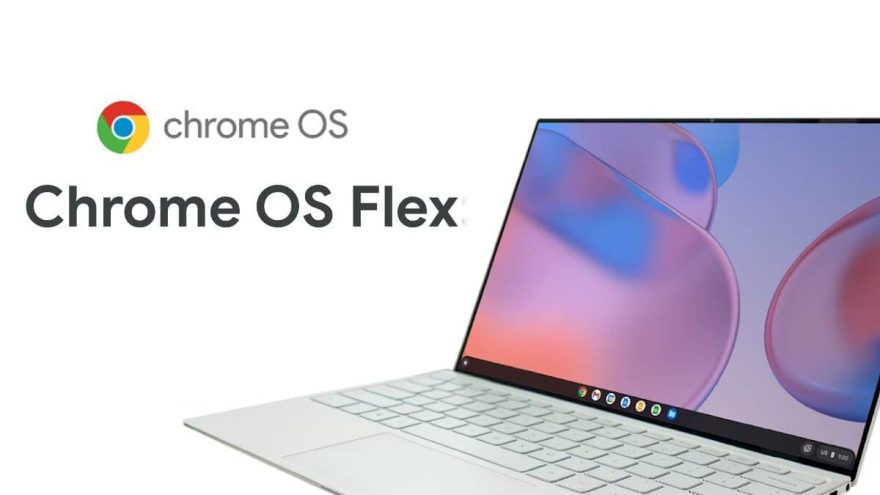Chrome OS Flex It's a great idea you had Google so that users can use the ChromeOS operating system on devices other than Chromebook, such as PCs and Macs. The objective is to modernize devices that for some reason have become obsolete, using a simple, secure and based operating system. in the Google cloud.
For both schools and businesses, Chrome OS Flex is very easy to manage and, like Chromebooks, registration is carried out with the Chrome Upgrade License (both Education and Enterprise versions) and google admin console.
In the next post we will comment What is Chrome Os Flex?, and everything you need to know to start using it.
1. What is Chrome OS Flex for?
ChromeOS Flex was born as a complement to the ChromeOS operating system, designed to transform, modernize, and improve the performance of all types of PCs and Windows and macOS-based laptops. In this way, these devices will be able to use the Google operating system, which is characterized by being easy to use, fast, secure and cloud-based 100%.
Among the most notable features are:
![]() Modernize old computers with the ChromeOS operating system
Modernize old computers with the ChromeOS operating system
![]() Cloud work experience, from anywhere
Cloud work experience, from anywhere
![]() It can be easily installed with a USB drive and everything is managed from the Google Administration Console
It can be easily installed with a USB drive and everything is managed from the Google Administration Console
![]() Allows you to extend the useful life of the devices you already have, contributing to sustainability and energy consumption
Allows you to extend the useful life of the devices you already have, contributing to sustainability and energy consumption
2. What computers can I turn into a Chromebook?
The main function of ChromeOS Flex is to convert devices with a different operating system to Chrome OS, so that they can be used with it.
Any type of PC and laptop running Windows or macOS can use ChromeOS Flex just like a Chromebook does. This allows you to protect the device, make it faster, and keep it constantly updated, all managed from the cloud.
Of course, not all teams can use this technology. For example, there is a variety of business and educational equipment from manufacturers such as Asus, Acer, Lenovo, among others that do allow it and, in this sense, Google certifies and maintains a list with all models that can be use with ChromeOS Flex.
3. Chrome OS Flex from a USB drive
As we have seen, ChromeOS Flex It has many advantages, and one of them is that can be installed very easily. It allows you to test it before fully installing it, and all it takes is a usb drive.
There are two options, if you want to try it before installing it on the device, it is possible to start and run ChromeOS Flex from the USB. Then, when you are ready you can install the operating system and deploy it to your organization via USB or your corporate network.
4. Advantages of Chrome OS Flex
This ChromeOS version It stands out for being simple, both when installing and when using it. In addition, it is agile, secure and works in the cloud, which allows you to store more files and be able to access them from any device and location.
For example, it is recommended for schools with many computers that need to be modernized or controlled all from one place (in the Google Administration Console) and the same in companies that need a replacement.
4.1. Reuse computers and improve their performance
As we have seen, with ChromeOS Flex you can modernize devices that have become obsolete or that need updating. You can install the operating system ChromeOS on Mac and Chrome OS on Windows so that they have all the functions that a Google Chromebook.
With this feature, devices do not slow down over time, and updating in the background reduces downtime and improves productivity.
4.2. Integration with Google ecosystem
When you install ChromeOS Flex on the device you start using the Google operating system, and like Chromebooks you acquire the advantage of integrating all Google tools, to work, collaborate and communicate.
Furthermore, once you associate the Chrome Upgrade license On devices with ChromeOS Flex, you can manage all laptops centrally. For companies, updating Chrome Enterprise Allows you to access the built-in business features of ChromeOS Flex devices. Secure and manage devices using the cloud-based Google Admin Console.
4.3. Greater security
The version of ChromeOS Flex meets the same requirements as ChromeOS in terms of security. In this sense, it ensures the threat protection including ransomware, malware, and employee errors.
One of the main features in this regard is the remote wiping of devices and the ability to disable them or enable access restrictions to ensure that data does not fall into the wrong hands.
This is important since Windows and macOS are often targeted by cybercriminals and in Chrome OS there are notable mechanisms for protection against cyber threats.
4.4. Try a Chromebook, without buying it
ChromeOS Flex can be tested on devices before installing them, and this allows you to use most of the functionality of a Chromebook to make the decision whether to buy one or simply install the ChromeOS Flex version.
To do this test it is possible implement ChromeOS Flex quickly via a USB drive or over your phone's network. company or educational center.
5. Disadvantages of Chrome OS Flex
There are certain differences between the "official" Chromebooks and these "adapted" Chromebooks: among other things, the latter do not have Google security chips that allow us to offer the verified boot, and we will not have Android or Google Play applications.
5.1. It's not a Chromebook
Although this version of ChromeOS can adapt a Windows or macOS device, there are certain functionalities and features that will not be the same as a Chromebook. In this case, depending on the use you want to give to the device, you should think about purchasing a Chromebook directly.
Chromebooks are laptops designed by Google that allow you to work faster, safer and easier. The most important thing to note is that they work with the Chrome OS operating system, and using only cloud storage.
Some of its main features are:
![]() A Chromebook needs less storage space since it stores everything in the cloud.
A Chromebook needs less storage space since it stores everything in the cloud.
![]() Google devices tend to be cheaper and have longer battery life.
Google devices tend to be cheaper and have longer battery life.
![]() Chromebooks typically have a very portable and lightweight design, making them ideal for traveling or taking to school or work.
Chromebooks typically have a very portable and lightweight design, making them ideal for traveling or taking to school or work.
![]() Chromebooks typically boot up within a few seconds, allowing users to quickly start working or browsing the web.
Chromebooks typically boot up within a few seconds, allowing users to quickly start working or browsing the web.
![]() Chromebooks automatically update with the latest versions of the operating system and apps, meaning users don't have to worry about installing software updates.
Chromebooks automatically update with the latest versions of the operating system and apps, meaning users don't have to worry about installing software updates.




